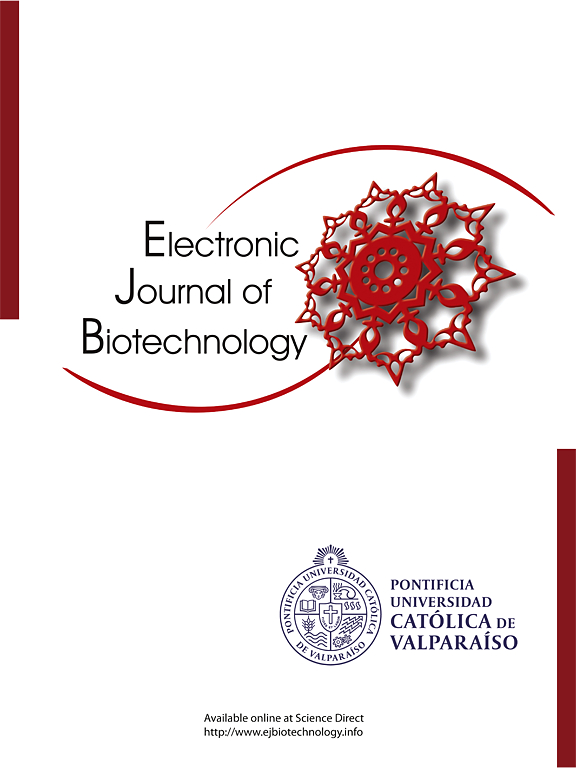Response of heterotrophic nitrifying/aerobic denitrifying strain Pseudomonas stutzeri YXH-102 to hypersaline stress
IF 2.5
4区 生物学
Q3 BIOTECHNOLOGY & APPLIED MICROBIOLOGY
引用次数: 0
Abstract
Background
Hypersaline wastewater poses significant environmental challenges, necessitating efficient bioremediation strategies. This study investigates the hypersaline tolerance mechanisms of Pseudomonas stutzeri YXH-102, a heterotrophic nitrifying/aerobic denitrifying bacterium isolated from Yuncheng Salt Lake sediments, under high-salinity stress.
Results
Comparative transcriptomic analysis revealed 268 differentially expressed genes (DEGs) in response to a 10 % NaCl shock, with 86 upregulated and 182 downregulated. Key findings highlight the critical roles of oxidative stress mitigation, energy metabolism adaptation, and ion homeostasis. Salt stress triggered reactive oxygen species (ROS) accumulation, countered by upregulated cytochrome c oxidase (reducing ROS generation) and glutathione S-transferase (enhancing ROS scavenging). Concurrently, energy metabolism pathways, including fatty acid β-oxidation and acetyl-CoA production, were activated to sustain cellular energy demand. Notably, the electron transport chain (ETC) generated a robust proton motive force (PMF), which directly fueled potassium uptake via H+/K+ symporters to counteract osmotic imbalance. TonB-dependent transporters for nutrient uptake were also significantly upregulated, suggesting enhanced nutrient acquisition under salinity.
Conclusions
These findings elucidate how P. stutzeri YXH-102 combats salt stress through integrated ROS detoxification, energy optimization, and PMF-driven ion transport, providing molecular insights for its application in hypersaline wastewater bioremediation.
How to cite: Wang Y, Wang Z, Hu Y, et al. Response of heterotrophic nitrifying/aerobic denitrifying strain Pseudomonas stutzeri YXH-102 to hypersaline stress. Electron J Biotechnol 2025;76. https://doi.org/10.1016/j.ejbt.2025.05.001.

异养硝化/好氧反硝化菌株stutzeri假单胞菌YXH-102对高盐胁迫的响应
高盐废水带来了重大的环境挑战,需要有效的生物修复策略。本文研究了从运城盐湖沉积物中分离的异养硝化/好氧反硝化细菌stutzeri YXH-102在高盐胁迫下的耐盐机制。结果对比转录组学分析显示,在10% NaCl胁迫下,有268个差异表达基因(deg)表达上调,182个下调。关键发现强调了氧化应激缓解、能量代谢适应和离子稳态的关键作用。盐胁迫触发活性氧(ROS)积累,通过上调细胞色素c氧化酶(减少ROS生成)和谷胱甘肽s转移酶(增强ROS清除)来抵消。同时,能量代谢途径,包括脂肪酸β-氧化和乙酰辅酶a的产生,被激活以维持细胞的能量需求。值得注意的是,电子传递链(ETC)产生了强大的质子动力(PMF),通过H+/K+同调体直接促进钾的吸收,以抵消渗透失衡。吨位依赖性转运蛋白的营养吸收也显著上调,表明盐胁迫下营养获取增强。结论这些发现阐明了P. stutzeri YXH-102如何通过ROS解毒、能量优化和pmf驱动的离子运输来对抗盐胁迫,为其在高盐废水生物修复中的应用提供了分子视角。引用方式:王毅,王志,胡毅,等。异养硝化/好氧反硝化菌株stutzeri假单胞菌YXH-102对高盐胁迫的响应。中国生物医学工程学报(英文版);2009;16。https://doi.org/10.1016/j.ejbt.2025.05.001。
本文章由计算机程序翻译,如有差异,请以英文原文为准。
求助全文
约1分钟内获得全文
求助全文
来源期刊

Electronic Journal of Biotechnology
工程技术-生物工程与应用微生物
CiteScore
5.60
自引率
0.00%
发文量
50
审稿时长
2 months
期刊介绍:
Electronic Journal of Biotechnology is an international scientific electronic journal, which publishes papers from all areas related to Biotechnology. It covers from molecular biology and the chemistry of biological processes to aquatic and earth environmental aspects, computational applications, policy and ethical issues directly related to Biotechnology.
The journal provides an effective way to publish research and review articles and short communications, video material, animation sequences and 3D are also accepted to support and enhance articles. The articles will be examined by a scientific committee and anonymous evaluators and published every two months in HTML and PDF formats (January 15th , March 15th, May 15th, July 15th, September 15th, November 15th).
The following areas are covered in the Journal:
• Animal Biotechnology
• Biofilms
• Bioinformatics
• Biomedicine
• Biopolicies of International Cooperation
• Biosafety
• Biotechnology Industry
• Biotechnology of Human Disorders
• Chemical Engineering
• Environmental Biotechnology
• Food Biotechnology
• Marine Biotechnology
• Microbial Biotechnology
• Molecular Biology and Genetics
•Nanobiotechnology
• Omics
• Plant Biotechnology
• Process Biotechnology
• Process Chemistry and Technology
• Tissue Engineering
 求助内容:
求助内容: 应助结果提醒方式:
应助结果提醒方式:


